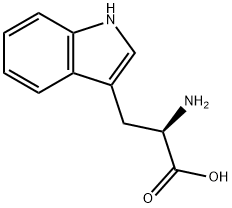D(-)-Glutamic acid
Synonym(s):(R)-2-Aminoglutaric acid;(R)-2-Aminopentanedioic acid;D -Glu;R-(−)-1-Aminopropane-1,3-dicarboxylic acid
- CAS NO.:6893-26-1
- Empirical Formula: C5H9NO4
- Molecular Weight: 147.13
- MDL number: MFCD00063112
- EINECS: 230-000-8
- SAFETY DATA SHEET (SDS)
- Update Date: 2025-12-26 12:07:08

What is D(-)-Glutamic acid?
Chemical properties
White cryst. powder
The Uses of D(-)-Glutamic acid
D-Glutamic Acid is the unnatural (R)-enantiomer of Glutamic Acid, a non-essential amino acid. Its salt form (glutamate) is an important neurotransmitter that plays a key role in long-term potentiation and is important for learning and memory. Glutamic Acid is also a key molecule in cellular metabolism.
The Uses of D(-)-Glutamic acid
D-Glutamic acid acts as a superior to alpha ketoglutarate. It helps in the growth of Lactobacillus arabinosus. It can inhibit the IgE binding to peanut allergens. It is widely used in pharmaceuticals and foods.
The Uses of D(-)-Glutamic acid
D-glutamic acid is suitable for use in the structure-affinity relationship (SAR)-study of GR (glutamate racemase) enzyme and its inhibitors.
Definition
ChEBI: An optically active form of glutamic acid having D-configuration.
General Description
D-Glutamic acid is an essential constituent of the bacterial peptidoglycan structure. It is added to UDP-N-acetylmuramyl-L-alanine (UDP-MurNAc-L-alanine) by the enzyme D-glutamic acid-adding enzyme (murD). This is, then, incorporated into the peptidoglycan precursor. Peptidoglycan makes up the cell walls of Gram-positive and -negative bacteria. The conversion of L-glutamate to D-glutamate by glutamate racemase (GR) enzyme is an essential step in the synthesis of peptidoglycan.
Biological Activity
Excitatory amino acid acting at NMDA receptors; less active than the L-isomer.
Biochem/physiol Actions
Unnatural isomer of glutamic acid.
Storage
Room temperature
Properties of D(-)-Glutamic acid
| Melting point: | 200-202 °C (subl.)(lit.) |
| alpha | -31.3 º (c=10, 2 N HCl) |
| Boiling point: | 267.21°C (rough estimate) |
| Density | 1.5380 |
| refractive index | 1.4210 (estimate) |
| storage temp. | Keep in dark place,Sealed in dry,Room Temperature |
| solubility | Water (Slightly) |
| pka | pK1:2.162(+1);pK2:4.272(0);pK3:9.358(-1) (25°C) |
| form | Powder |
| color | White to off-white |
| Water Solubility | 7 g/L (20 ºC) |
| Merck | 14,4469 |
| BRN | 1723800 |
| CAS DataBase Reference | 6893-26-1(CAS DataBase Reference) |
| NIST Chemistry Reference | D-Glutamic acid(6893-26-1) |
| EPA Substance Registry System | D-Glutamic acid (6893-26-1) |
Safety information for D(-)-Glutamic acid
| Signal word | Warning |
| Pictogram(s) |
 Exclamation Mark Irritant GHS07 |
| GHS Hazard Statements |
H315:Skin corrosion/irritation H319:Serious eye damage/eye irritation |
| Precautionary Statement Codes |
P264:Wash hands thoroughly after handling. P264:Wash skin thouroughly after handling. P280:Wear protective gloves/protective clothing/eye protection/face protection. P362:Take off contaminated clothing and wash before reuse. P302+P352:IF ON SKIN: wash with plenty of soap and water. P305+P351+P338:IF IN EYES: Rinse cautiously with water for several minutes. Remove contact lenses, if present and easy to do. Continuerinsing. P332+P313:IF SKIN irritation occurs: Get medical advice/attention. P337+P313:IF eye irritation persists: Get medical advice/attention. |
Computed Descriptors for D(-)-Glutamic acid
| InChIKey | WHUUTDBJXJRKMK-GSVOUGTGSA-N |
New Products
4,4-Difluoropiperidine hydrochloride tert-butyl 9-methoxy-3-azaspiro[5.5]undecane-3-carboxylate Indole Methyl Resin N-Isopropylurea N,N-Dicyclohexylcarbodiimide(DCC) MELDRUMS ACID 5-METHYLISOXAZOLE-4-CARBOXYLIC ACID Magnessium Bis glycinate Zinc ascorbate 1-bromo-2-butyne 2-acetamidophenol 9(10H)-anthracenone Erythrosin B, 4-Piperidinopiperidine 2-((4-morpholinophenylamino) (methylthio) methylene) malononitrile 2,4-dihydroxybenzaldehyde 3-(4-morpholinophenylamino)-5-amino-1H-pyrazole-4-carbonitrile Methyl 2-methylquinoline-6-carboxylate 2,6-dichloro-4-nitropyridine 4-Bromo-2-chlorobenzonitrile 2-(benzylamino)acetic acid hydrochloride 4-(tert-Butoxycarbonylamino)but- 2-ynoic acid 3,4-dihydro-2H-benzo[b][1,4]dioxepine 1-Phenyl-1-cycloprppanecarboxylicacidRelated products of tetrahydrofuran








You may like
-
 6893-26-1 99%View Details
6893-26-1 99%View Details
6893-26-1 -
 D-Glutamic Acid extrapure CHR CAS 6893-26-1View Details
D-Glutamic Acid extrapure CHR CAS 6893-26-1View Details
6893-26-1 -
 D-Glutamic acid, 99% CAS 6893-26-1View Details
D-Glutamic acid, 99% CAS 6893-26-1View Details
6893-26-1 -
 D-Glutamic Acid CAS 6893-26-1View Details
D-Glutamic Acid CAS 6893-26-1View Details
6893-26-1 -
 D-Glutamic acid 95.00% CAS 6893-26-1View Details
D-Glutamic acid 95.00% CAS 6893-26-1View Details
6893-26-1 -
 D-Glutamic acid 98% CAS 6893-26-1View Details
D-Glutamic acid 98% CAS 6893-26-1View Details
6893-26-1 -
 D-Glutamic acid CAS 6893-26-1View Details
D-Glutamic acid CAS 6893-26-1View Details
6893-26-1 -
 20677-73-0 (2,2-diethoxyethyl)methylamine 98%View Details
20677-73-0 (2,2-diethoxyethyl)methylamine 98%View Details
20677-73-0
